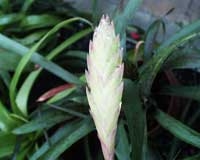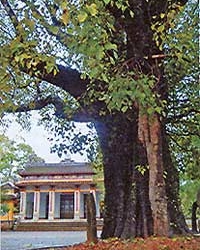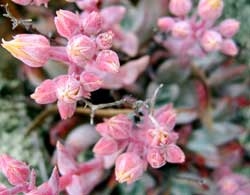To create an artificial spring during the winter months, Japanese farmers grow out-of-season strawberries in gigantic greenhouses heated by massive oil and gas heaters.
Strawberry cookies. Strawberry mochi. Strawberries are all the rage!
It may sound like a summer strawberry season. However, in Japan, the strawberry harvest peaks in winter—a season for picture-perfect strawberries, with the most pristine varieties selling for hundreds of dollars as special gifts.
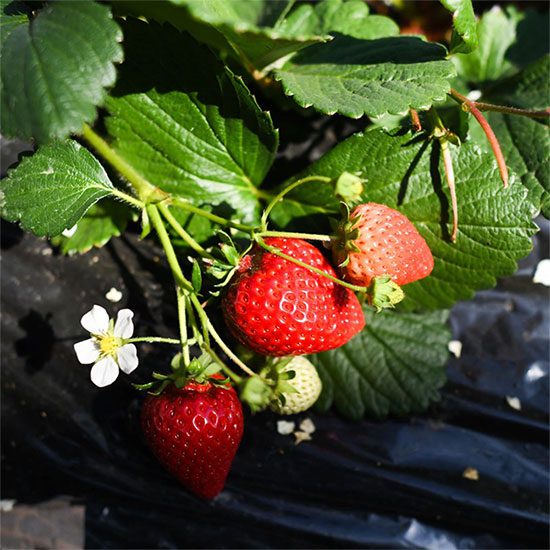
Out-of-season strawberries in Japan fetch high prices, but the costs are significant, including environmental impacts. (Photo: New York Times).
Japanese strawberries face environmental taxes. To create an artificial spring during the winter months, farmers grow delicious out-of-season strawberries in gigantic greenhouses heated by massive heaters that consume gas and oil.
Satoko Yoshimura, a strawberry farmer in Minoh, a suburb of Osaka, stated, “We have reached a point where many people think having strawberries in winter is a given.” Satoko has had to use kerosene to heat their greenhouse when temperatures drop below freezing.
But as she continues to keep the heaters fueled, Satoko wonders: “What are we doing?”
Fruits and vegetables are grown naturally in greenhouses around the world. However, Japan’s strawberry industry has reached a point where most farmers have stopped growing strawberries in warmer months when the products are less profitable. Instead, Japan imports most of its strawberry supply in summer, reserving resources for winter, when strawberries become rarer and more valuable.
Until a few decades ago, the strawberry season in Japan began in spring and lasted until early summer. Traditionally, the Japanese market cherishes early-harvest products, known as “Hatsumono,” ranging from tuna and rice to tea. A crop classified as “Hatsumono” can fetch prices many times higher than normal and even cause media frenzies.
As the country’s consumer economy flourished, the race for Hatsumono extended to strawberries. Farms began competing to bring strawberries to market earlier in the year.
Today, strawberries are an important Christmas item in Japan, adorning Christmas cakes sold nationwide throughout December. Mr. Miyazaki, director of Ichigo Tech, a strawberry business, mentioned that some farmers have started delivering the first strawberries of the season as early as November.
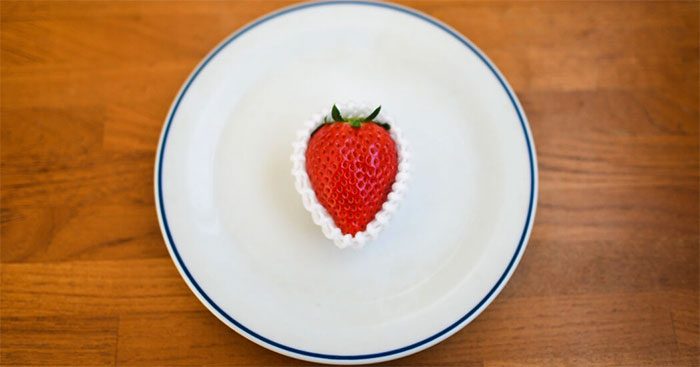
Strawberries in Japan’s freezing winter are a sought-after commodity. (Photo: New York Times).
Japan’s shift to growing strawberries in freezing weather has significantly increased the energy costs of strawberry production. According to analyses of greenhouse gas emissions related to various products in Japan, strawberry cultivation emits about eight times more greenhouse gases than grapes and over ten times that of mandarins.
Naoki Yoshikawa, an environmental science researcher at Shiga Prefectural University in western Japan, stated: “It all stems from heating. We have examined all aspects, including transportation or fertilizer production, but the heating system has the largest emissions.”
In Japan, the energy required to grow strawberries in winter is not only a burden on the climate but also makes strawberry farming costly, especially as fuel prices rise, impacting farmers’ profits.
Research and development of berry varieties, along with complex branding efforts, have alleviated some of this pressure by enabling farmers to sell at higher prices. Strawberry varieties sold in Japan have whimsical names like Beni Hoppe (“red cheeks”), Koinoka (“fragrance of love”), and Bijin Hime (“beautiful princess”). They are often given as gifts alongside other expensive fruits, like watermelons.
Tochigi, a northern prefecture of Tokyo, produces more strawberries than anywhere else in Japan and has made efforts to address climate and cost issues with a new strawberry variety named Tochiaika, a shortened version of “Tochigi’s favorite fruit.”
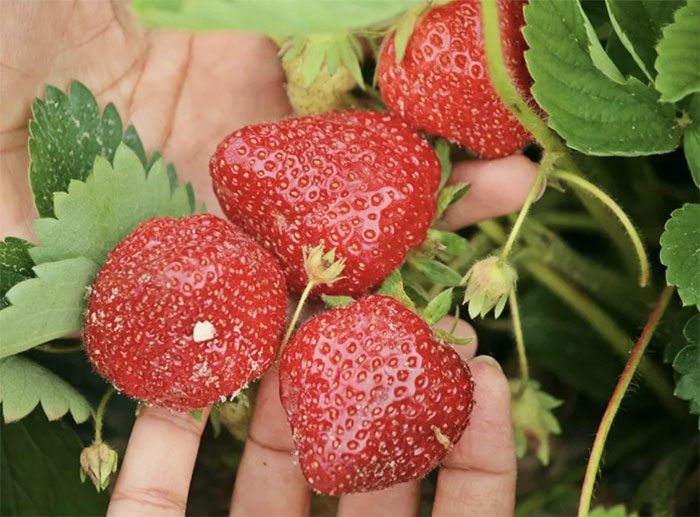
Japanese scientists are discovering ways to reduce energy costs for growing strawberries in freezing conditions. (Photo: New York Times).
After seven years of development by agricultural researchers at the Tochigi Strawberry Research Institute, this new strawberry variety is taller, better resistant to diseases, and yields more with the same inputs, making cultivation more energy-efficient.
Tochiaika strawberries also have firmer skins, reducing the number of strawberries that spoil during transportation, which helps minimize food waste—an important factor for climate impact. In the United States, where strawberries are primarily grown in the warmer climates of California and Florida, it is estimated that strawberry buyers discard one-third of the harvest, partly because they spoil too easily.
Instead of heaters, some farmers in Tochigi use what is known as a “water curtain,” which is essentially a flowing water membrane covering the outside of the greenhouse to maintain a stable internal temperature, although this requires access to abundant groundwater.
Other efforts are also underway. Researchers in the northeastern city of Sendai are exploring ways to use solar energy to keep temperatures warm in strawberry greenhouses.








































